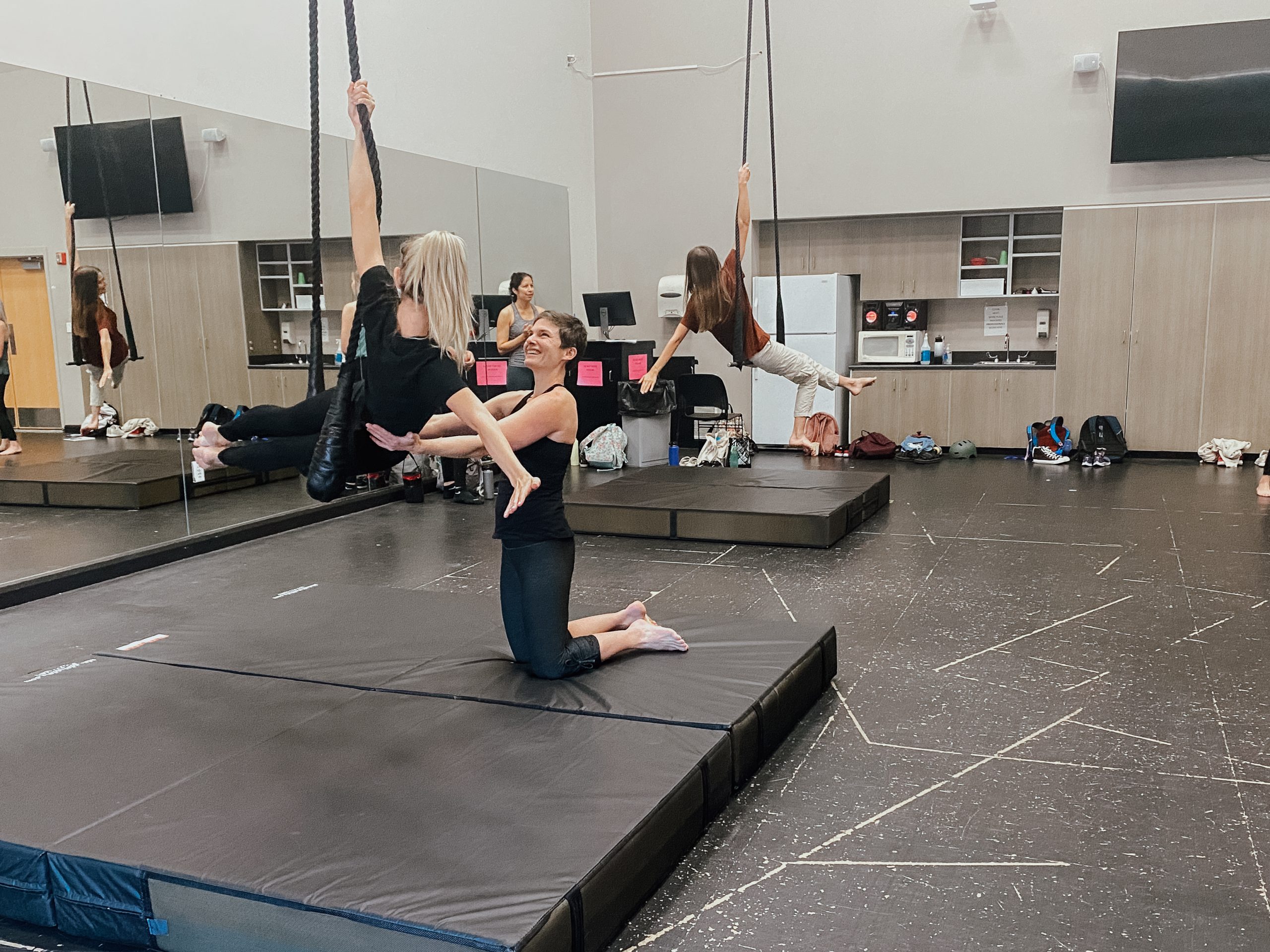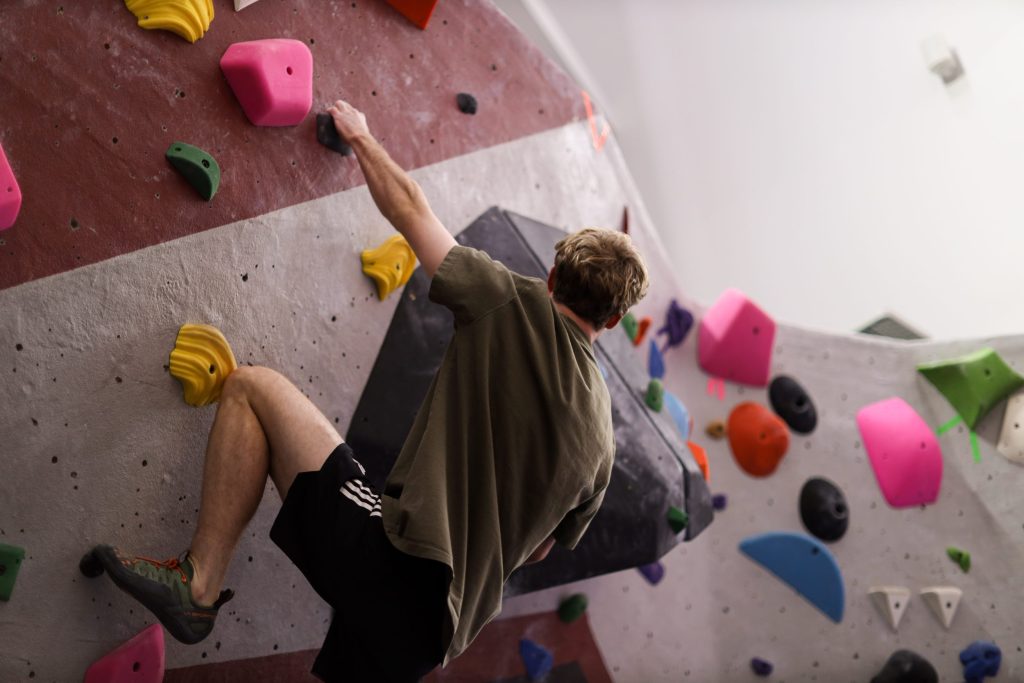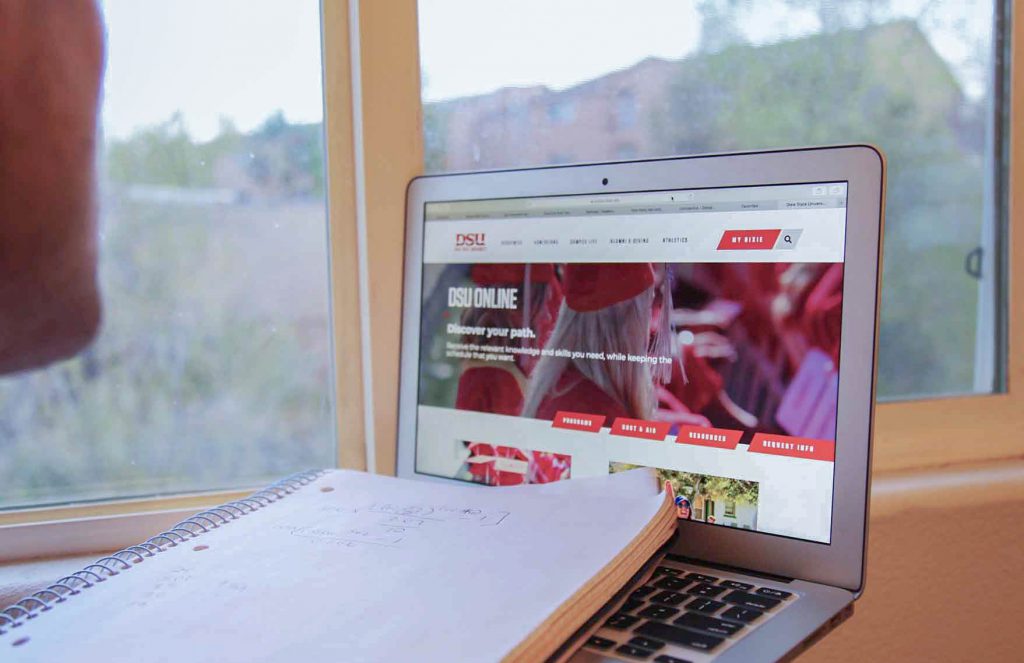How cool would it be to be able to get up in the morning, put on a swimsuit and go to class? Students at Dixie State University have this option.
With over 70 sections of Fitness, Adventure, and Sports Techniques (FAST) courses, six recreational clubs, and at least three club sports, DSU encourages and represents an active lifestyle.
The recreational clubs include rock climbing, hiking, pickleball, football, water polo and ballroom dance. Campus Recreation also houses a Club Sports program that includes other recreational clubs which hold practices and competes with other universities. These clubs include Wrestling, Rugby, Lacrosse, etc.
Anilee Adams, assistant director of student involvement and leadership, said just as any other type of club, these clubs are going to lead to a better college experience by improving students’ academic performance and allowing ample opportunities for networking and social interaction.
“I’m a big believer in getting outside and [maintaining an] active lifestyle,” Adams said. “Mental and physical well-being comes from moving your body. These types of clubs provide an outlet for you to do that.”
Although Adams does not have a definitive number of students in the clubs for the semester yet, the hiking club has continued to have a higher number of students involved because hiking does not require a special skill set.
Prior to the COVID-19 pandemic, the hiking club would have anywhere from 60-80 students on their club hikes, depending on where and when the hikes took place.
Adams said a couple of hundred students signed up for the pickleball club at Club Rush, which is not a common number for clubs.
Matt Morgan, a junior accounting major from Santa Clara, started the pickleball club in January 2021 because staying physically active is fun for him and helps him maintain a healthy mindset. He said his father has been his role model for staying active because even at 86 years old he continues to play tennis regularly.
According to the Centers for Disease Control and Prevention, people of all ages are recommended to maintain moderate amounts of daily physical activity either in longer sessions, such as a 30-minute brisk walk or in shorter sessions, such as a 15-20 minute jog.
Physical fitness improves students’ ability to retain information and improve their mental health as it reduces stress.
“Students are under a tremendous amount of stress,” said FAST instructor Camilla Clawson. “School is not easy, it’s a lot of jumping through hoops … These classes help counteract and help students become more productive when it comes to studying.”
Clawson, who teaches dance fitness this semester, said exercise does not need to feel like a chore, it does not need to be solely going to the gym, it can be any type of movement that you love.
“I tell my students [to] just find something that gets you up and moving and stay with it,” Clawson said. “If you don’t enjoy what you’re doing, find something you like to do.”
Clawson loves teaching this course because she watches students walk in on the first day shy and nervous but walk out at the end with confidence and love for the activity.
Susan Hart, associate professor of exercise science, said the exercise science activity classes like yoga, rock climbing, lifeguarding, etc. are popular among students because it builds their confidence in these activities and it’s not the same as the physical exercise classes students were required to take in grade school.
It’s vital for students’ psychological well-being to have a break from their everyday academic classes and attend a fun, upbeat physical class, Hart said.
“Engaging in physical activity is going to make people so much more ready to study for their classes,” Hart said. “It also provides an unbelievable venue for socialization with other students.”
Your young adult years are the prime time to learn new skills and build strength, which is why staying physically active is important. When you’re older, it’s harder to develop the skillset for these physical exercise activities and you are less capable of moving your body in new ways.
The CDC’s website states three statistics about physical activity as people get older:
- Nearly half of Americans 12-21 years do not participate in vigorous activity on a regular basis
- About 14% of young people report no recent physical activity, and inactivity is more common among females, which is at 14%, than males, which is at 7%.
- As age increases, participation in physical activity declines
Hart said she highly agrees with the statistics; physical activity is encouraged until about 12 years old. It seems as children get into their teenage years unless the child is already specialized in a sport, academics are prioritized.
Hart said females are less active than males due to societal reasons.
“Little girls at Christmastime get dolls and things that are more conducive to people that are not moving a lot … and boys get balls and things that are more conducive to physical activity,” Hart said. “Boys are pushed more by society to be physically active.”
No matter your gender, staying physically fit is a vital choice to make in your young adult years, so trade out your everyday clothes for a swimsuit and take that paddleboard yoga or lifeguarding class.




